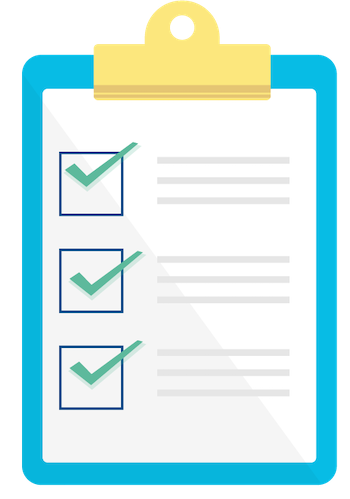
There are many places where payment can be held up as it makes its way from the Owner to the crew. The first potential roadblock is at the top, where the Architect reviews the monthly Application for Payment. This is especially true for subs, who often have limited access to Architects, but still rely on their approval to get paid.
But even without direct contact, there are things that subs and contractors can do to make sure funds are released in a timely fashion and the money reaches their pockets as quickly as possible. The basic idea behind all of it is simple: You don’t get paid when the work has been done, you get paid when you prove the work has been done.
Prove your work to the architect
“I’ve obviously done the work,” you may say. “The proof is right there on the jobsite!”
That may be true, but it’s only part of the process. The Architect wants you to get paid what you’ve earned, but they must be able to verify it. All work has to be documented.
As a binding legal agreement, the Contract has clear submittal guidelines. These guidelines are strict, particularly where money is involved. All parties – the Owner, the Architect, the Contractor, the Subs and Suppliers – are bound to abide by them. So, getting this paperwork together is the key.
Editor’s note: The American Institute of Architects (AIA) produces one of the most common pay application forms, especially when an Architect is involved on a project. Learn more about how to fill out each section of the AIA G702 Application for Payment.
The Architect is ultimately going to review the Application for Payment and the supporting documentation against the Schedule of Values to determine how much of the work has been completed. That determines how much of the money should be released.
Note the phrase ‘supporting documentation’. That’s where your power to help things along lies. There are two kinds of supporting documentation, the documents you must include and those that you should include.
The must-haves are those required by the Contract. Typically, these include the Application for Payment (including a list of any suppliers and subs that you’ve already paid), a Schedule of Values or continuation sheet, and any required Lien Waivers.
As the Architect, I’m responsible for reviewing these documents and simply cannot approve the release of any payment without them. It’s in my contract with the Owner. My fee is on the line here, too, so I have to take this paperwork seriously.

Download the checklist
Don’t miss a document again! Download a free Pay Application Checklist to keep track of the supporting documents to include.
On a large commercial job, some of these documents might even have to be notarized. On smaller residential work, the requirements might not be so strict, but the idea is the same. Owners need to see some proof that the work they’re paying for has been done.
The documents you should include are the ones you can use to help grease the wheels of the payment machinery. General Contractors and Architects should have a good idea of what you’ve done, but they are typically very busy and have staff that are not 100% efficient. So it’s in your best interest to make it easy for them to pay you.
Should-haves include photos of the work completed, including any materials stored on site. And even for materials stored off-site, a receipt and a photo should allow you to collect. The general rule is: If you’ve paid for materials, you can get paid for them.
And if you’ve already prepared and submitted your shop drawings? Your samples? Built a mock-up on site? Document them and submit for payment. Give your GC all the ammo they need to prove that the work has been done.
Submit pay applications on time
Submitting a payment app is like attempting a moon landing. You get one shot at it each month and if you miss, you may have to wait until it comes around again. In theory, the CG could hold the application while he waits for you, but he often has other subs waiting, not to mention his own forces to pay, and may not care to hold things up just for you.
Obviously, what this requires is a little dedicated manpower and some planning, as you’ll likely be filling out the applications and developing the documentation before you’re sure of the exact amount of work that will be completed by the due date.
“Submitting a payment app is like attempting a moon landing. You get one shot at it each month and if you miss, you may have to wait until it comes around again.”
Having a process for your pay applications is just as important as having a process for the work you do in the field. If you know the contract requirements ahead of time, which you should, you can plan for how you’re going to get the paperwork done each month in time.
And make sure you understand each specific contract, including the GC’s requirements in his submittals. They do vary from project-to-project and from state to state. The last thing you want is to miss a pay period because you have to go looking for a notary at the last second (if it’s required by the contract).
Provide accurate information
For many obvious reasons, some subs (and many GC’s) may, occasionally, try to front-load the pay applications to get more of their money up front. However, that pesky Architect is committed, by his contract, to pay only for work completed to date.
If you’ve done 50% of the work, but you invoice for 75% completion, the entire process will stop while the Architect re-visits the site photos, checks your documentation, and calls the GC to figure out what’s going on.
Or, depending on how often this has happened and how busy I am, I might simply reject the pay app entirely in order not to waste any more of my time. In either case, by trying to get ahead of the pay schedule, you will end up delaying that month’s pay for yourself and maybe for everyone else.
You also want to make sure that the Application for Payment squares exactly with the Schedule of Values. That schedule, done at the onset of the Contract, is cast in stone and is the legal definition of the money owed for the work.
If your application doesn’t coordinate with it, it will be rejected. Remember, as the Architect, my primary job during construction is to make sure the Owner gets what they’re paying for.
Stay on top of change orders
There is exactly one way to alter the Contract: by Change Order. Certain details of the work can be changed less formally, but anything that affects the time or cost of the job must be done by Change Order.
Many subs, especially smaller ones, don’t have a good, formal process for absorbing Change Orders, so that money often slips to the end of the job. But Change Order work is part of the Contract and should be paid for in the next pay app after the work called out in it is completed. So it’s important to modify your Schedule of Values immediately when one is issued.
Bother your GC to get a copy if of the Change Order if you have to, but get it and make it a part of your documentation. Because even though you can be required to do the work, and your subs and suppliers can bill you for it, until you account for a Change Order on the Schedule of Values, you can’t be paid for it.
Read more: 3 Ways the Architect Can Change a Contractor’s Work
The Architect wants to pay you
Yes, all of this documentation and paperwork is a pain and it’s hard to find time for it. But timely paperwork is money. And what you’ll find when you do it is that Architects are perfectly happy to release the money for the work you’ve done. You just need to help us tick the boxes that allow us to.
